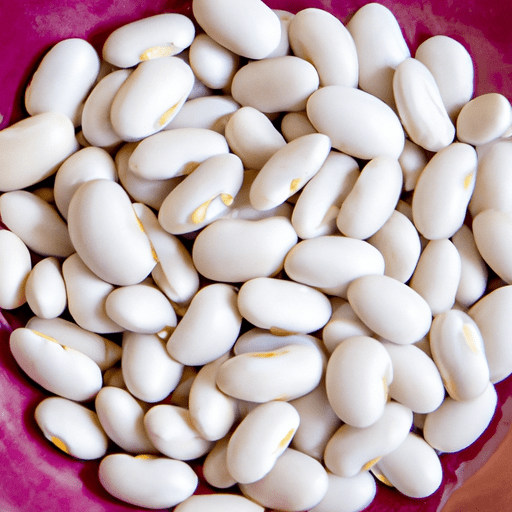Discover the Delights of Dried White Kidney Beans
When it comes to legumes, few can rival the versatility and nutritional value of dried white kidney beans. These mild-flavored legumes, also known as cannellini beans, offer a delightful addition to a wide range of dishes. Whether you’re a seasoned chef or a novice cook, these beans are a must-have ingredient in your pantry. In this blog post, we will explore the taste, common uses, nutritional benefits, and even uncover a few interesting historical facts about this culinary gem.
Taste and Texture
Dried white kidney beans are a true delight for the taste buds. Boasting a creamy texture and a pleasant, slightly nutty flavor, these beans are unbelievably versatile in the kitchen. They have a tender yet firm texture that lends itself well to numerous cooking methods, making them a popular choice in various cuisines around the world.
Common Uses in Cooking
When it comes to culinary applications, dried white kidney beans offer endless possibilities. Their subtle taste and creamy texture make them an ideal ingredient in soups, stews, salads, and dips. They also work wonders in casseroles, grain bowls, and vegetarian dishes.
One classic dish that showcases the amazing potential of these beans is Tuscan white bean soup. Simmered with aromatic vegetables, fresh herbs, and a touch of garlic, this hearty soup brings out the beans’ creaminess and elevates their subtle flavor.
For a more vibrant and refreshing experience, try incorporating cooked white kidney beans into a summery Mediterranean salad. Toss them with juicy tomatoes, red onions, feta cheese, and a drizzle of olive oil for a delightful burst of flavors.
Nutritional Value
Dried white kidney beans not only delight our taste buds but also provide a range of essential nutrients. They are an excellent source of plant-based protein, making them a valuable addition to vegetarian and vegan diets. These beans are also rich in dietary fiber, promoting healthy digestion and aiding in weight management.
Additionally, they are a good source of important minerals such as iron, magnesium, and potassium. Alongside these essential minerals, white kidney beans offer a healthy dose of B vitamins, contributing to overall well-being and energy production.
Interesting Facts and History
Did you know that dried white kidney beans have been cultivated and enjoyed for centuries? Native to South America, they were brought to Europe by Spanish explorers during the era of exploration. These beans quickly gained popularity in Italian cuisine, where they are famously used in dishes such as pasta e fagioli and minestrone soup.
In the United States, dried white kidney beans gained prominence in the mid-20th century when Italian immigrants introduced them to the American palate. Since then, they have become a staple in many traditional American recipes, including chili, bean salads, and bean-based side dishes.
Final Thoughts
Dried white kidney beans, with their mild flavor, creamy texture, and incredible versatility, are truly a culinary treasure. Whether you’re looking to prepare a comforting soup, a nutritious salad, or a flavorful stew, these beans are sure to impress. Their nutritional value and historical significance only add to their appeal. So, why not give dried white kidney beans a try and discover the joy they can bring to your cooking?
Sure! Here are some factual information about dried white kidney beans:
Origin: White kidney beans, scientific name Phaseolus vulgaris, are native to South America. They have been cultivated for thousands of years, with evidence of their consumption dating back to ancient Peru.
Common uses: Dried white kidney beans are widely used in a variety of culinary applications. They serve as a staple ingredient in many traditional dishes, including soups, stews, and salads. These beans are also popular for making bean spreads, casseroles, and as a side dish.
Nutritional benefits: Dried white kidney beans are highly nutritious. They are an excellent source of plant-based protein, dietary fiber, and essential minerals such as potassium, magnesium, and iron. They are also low in fat and cholesterol-free. These beans are known to have a low glycemic index, making them beneficial for blood sugar regulation.
Unique properties: White kidney beans get their name from their kidney-shaped appearance. Their smooth texture and mild flavor make them versatile in various recipes. These beans are commonly used in Mediterranean, Latin American, and Middle Eastern cuisines.
Historical significance: Beans, including white kidney beans, have been an important food source for many ancient civilizations. They were one of the primary crops cultivated by ancient Aztecs, Mayans, and Incas. The introduction of beans to Europe occurred following the expeditions of Christopher Columbus and other explorers.
Please note that while dried white kidney beans are delicious and nutritious, they must be soaked and cooked properly before consumption to remove potentially harmful toxins.




Use the share button below if you liked it.
It makes me smile, when I see it.